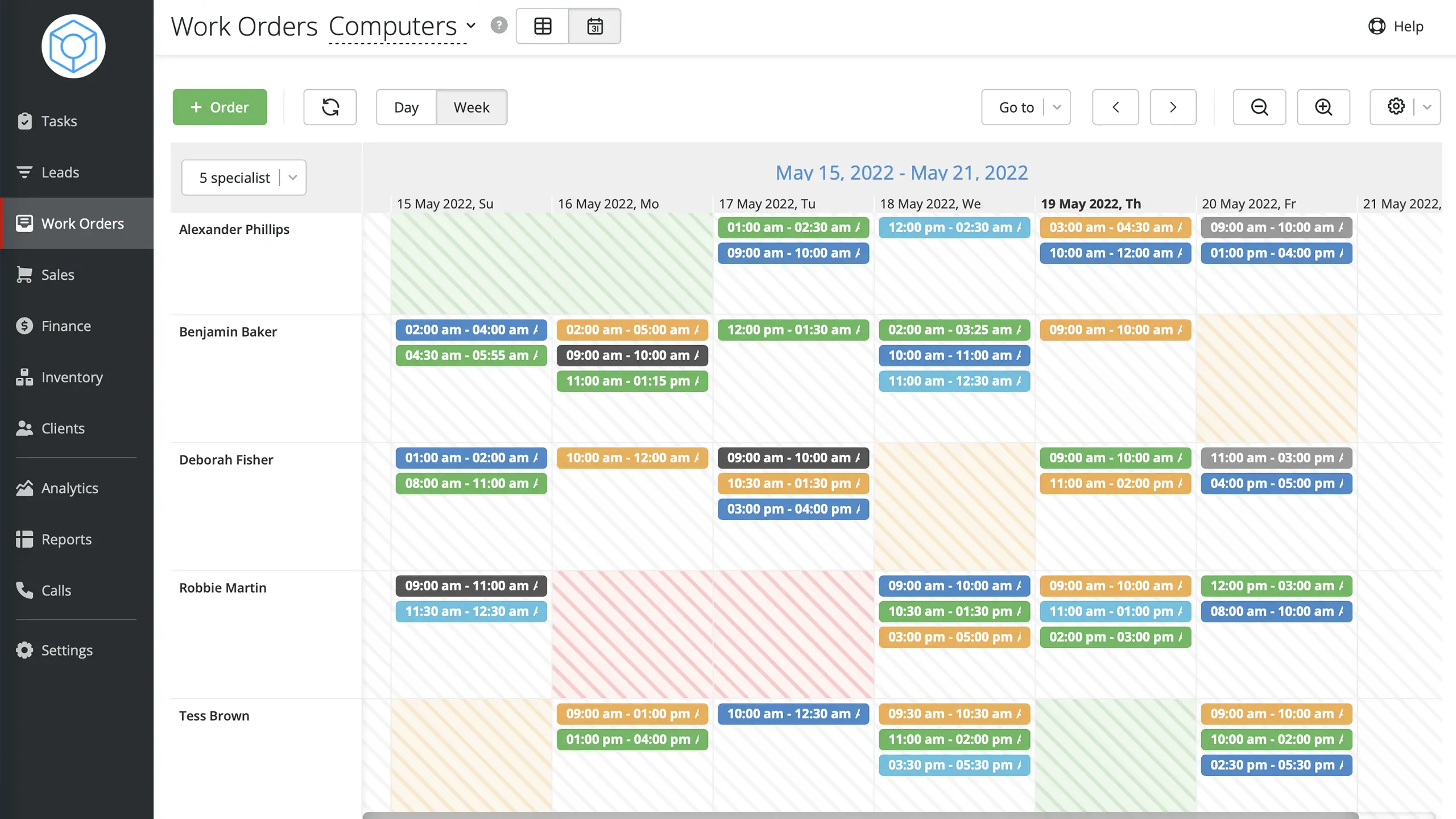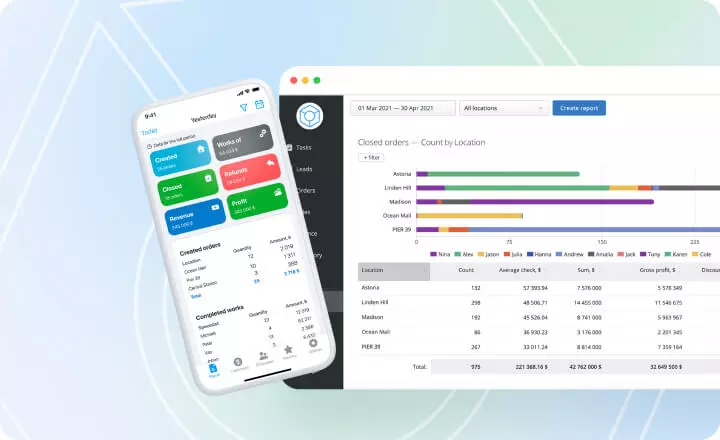Essential Chimney Sweep Tools: A Guide to What You Need
Find out in this blog post what is there in a chimney sweep kit and how it helps professionals do more jobs in less time
Table of Contents
7+2 Essential Tools for Professional Chimney Sweeps
Safety Tips for Handling Chimney Sweep Tools
Final Thoughts
Chimney sweeping is an important job that keeps chimney fires burning safely in homes with wood stoves or fireplaces. Without chimney maintenance, there’s an increased risk of smoke inhalation, house fires, and damage to the structure. As such, a chimney sweep must be well-equipped with everything they need for efficient yet safe cleaning.
This guide will walk you through all the various pieces of equipment a chimney sweep needs to efficiently and safely clean many different kinds of flues and chimneys that vent smoke from wood, gas, coal, or oil. From brushing rods to сreosote removing poultices, here are all the essential tools you will require to run a successful chimney sweep company.
7+2 Essential Tools for Professional Chimney Sweeps
1. Chimney Brush Kit
Chimney sweeps still use brushes to clean out smoke chambers of fireplaces and chimneys. The most commonly used brush is a round wire brush that can be attached to extension poles so the sweep can reach inside the chimney. Chimney brushes have a variety of uses, such as scrubbing away creosote deposits and soot buildup on the interior walls of the flue and sweeping debris from the roof. It comes in a wide range of sizes to fit different occasions, depending on the shape or width of the fireplace flue. Opt for stainless steel options as they resist the acidic effect of coal or other debris.
2. Drop Cloths
Drop cloths are needed to prevent soot, dust, and debris from getting all over carpets or furniture while cleaning chimneys. They’re typically made of poly that won’t let moisture through, so you can be sure that nothing from inside the flue will spread throughout your clients’ homes.
3. Chimney Caps
Chimney caps are especially important in professional work since they prevent water and animals from entering a chimney while also preventing downdrafts that affect efficiency in burning fires. It also acts as a spark arrestor which eliminates sparks flying out onto the ground level if there is no screen guard installed around them.
4. Chimney Rods
Rods can range in length depending on how wide or tall a fireplace is. Each rod has connectors at both ends designed to reach beyond its regular length and extend up to twenty feet if necessary. They are used with brushes to reach out into cracks too small for hand brushing techniques, ensuring everything gets completely clean in clearing away accumulations of soot found inside — no matter where it may be hiding. A quality set of steel rods will also be durable enough to last through multiple uses without bending or breaking over time.
5. Fireplace Shovels
These chimney cleaning tools are essential for professional sweeps since they come in handy when collecting any ash residue left behind after using a vacuum cleaner, as well as clearing away creosote build-up outside near the base of chimneys before installation happens afterward — avoiding potential accidents due having combustible material nearby during cleaning process itself. This type typically features little teeth all along its blade that helps grip onto smaller particles like sawdust or dirt more easily instead just skimming right over it like a regular shovel would do otherwise, too.
6. Chimney Inspection Devices
Inspecting the interior of masonry or metal chimneys can be difficult or even impossible without the proper inspection tools, such as cameras or thermal imaging devices. You can view problems such as cracked mortar joint obstructions caused by animals nesting within the stack liner without having to climb down the ladder while remotely monitoring the entire inspection process. If possible, try investing in dual camera systems which allow both sides of the interior of the chimney wall to be viewed simultaneously so no area is missed ensuring extra peace of mind during potential repairs or installation jobs going forward.
7. Vacuum Cleaners
This equipment is another must-have for a professional chimney sweep kit – they help keep the house free from soot after all your hard work. Choose one with a large capacity, strong suction power, and efficient filtration systems for ultimate cleanliness every time you use it.
8. Business Management & Job Scheduling Software
Field service management app and CRM software solutions are invaluable in helping you manage and grow your chimney sweep business. These digital tools manage tasks online, free up your time, and provide visibility into the overall operations of your business. Digitalizing your processes allows you to structure and use customer data and billing information effectively, track work orders, manage appointments and scheduling with job scheduling tools, send automated emails and messages for marketing purposes, analyze financial statements, track inventory, and more.
You can create your own digital toolkit of services you need or choose an all-in-one option like Orderry small business work order software. It provides service business owners with all the essential features to manage everything from chimney sweeping jobs, clients, and employee work schedules to inventory and finances. Moreover, free work order application for field service teams and Business Insights app for owners are available in all subscription plans.
 Manage jobs in chimney sweep software
Manage jobs in chimney sweep software
9. Protective Clothing & Accessories
When dealing with dust and dirt from chimneys, protective clothing is essential. A face mask usually comes with any vacuum cleaner, but if it isn't included, buy one separately; this prevents particles from entering your lungs when cleaning out the residue from within your chimney walls and flue lining. You should also consider wearing overalls or dedicated workwear explicitly made for such jobs – these will help protect your skin against harsh chemicals found inside of them and shield you from any debris that may fly up while cleaning, which could otherwise cause injury if not adequately protected against.
Safety Tips for Handling Chimney Sweep Tools
Wear Protective Gear
If you’re cleaning chimneys professionally, it’s essential to wear the correct protective gear, such as safety goggles and gloves made of thick leather or canvas. This will protect your face and hands from splinters or flying debris.
Know Your Tool
Once you have chosen your tools and equipment, it’s time to read all instructions included with the item before beginning use on soft brick or hard tile-type grates/surfaces. Always check for loose parts, sharp edges, rust, etc., that could cause harm during use. Proper maintenance is also crucial in maximizing tool effectiveness and longevity; if something doesn’t seem right, take a few minutes to inspect it before fully engaging in the task at hand.
Test Hard Surfaces
When using chisel heads, make sure to test the surface for hardness first by tapping gently before applying more pressure — this can help prevent chipping, cracking, or further damage in harder surfaces like brick or tile so that you get the best performance out of your tool while avoiding costly repair costs afterward.
Be Prepared
Before starting any job, ensure you have all your tools ready and at hand – nothing can slow down progress as much as an ill-prepared workspace. Ensure there is enough room around the work area (especially when dealing with large carving jobs) and that you have all the necessary protective equipment, such as eye protection, dust masks, etc.
Watch Where You Step
Because chimneys often stretch taller than our height, be careful when climbing around them – slippery roofs can be dangerous, so always wear non-slip shoes and double-check ladders for stability before using them (eye bolts may need reattaching if rusty).
Use Proper Disposal Methods
Once completed, properly dispose of all debris created because chemical residue from residual loose mortar mixed with water could stain other surfaces around the home. Generally, bagging it into a sealed plastic bag is safest but contact local authorities on regulations regarding disposal dependent on municipality laws regarding building materials/tools used while completing a project at hand.
Take Breaks As Needed
Chimney sweeps may not sound physically demanding but can quickly become tiring after long hours working above ground level. Taking breaks periodically throughout the job helps keep alertness levels high and performance optimized. So, never push yourself beyond stamina limits playing the hero — staying safe trumps powering through every time.
Final Thoughts
Chimney sweep tools are designed to remove soot and ash from the inside of a chimney. The most common are brushes to scrub away soot and creosote, power vacuums for debris removal, chimney caps and spark arrestor installations to prevent fires, and specialized equipment for analyzing the interior of chimneys. Get all these valuable tools and devices ready before starting your entrepreneurial journey, and don’t forget about modern software tools.



